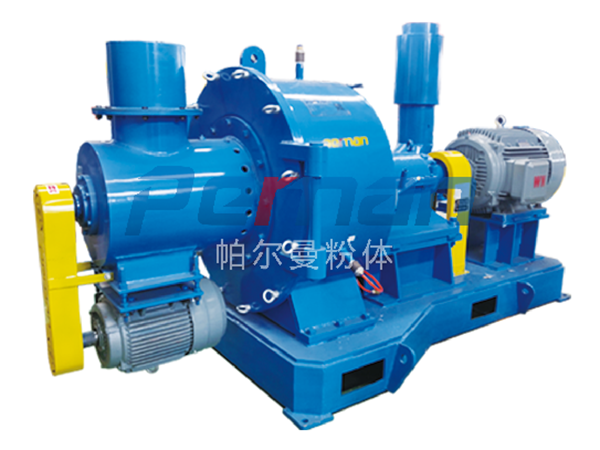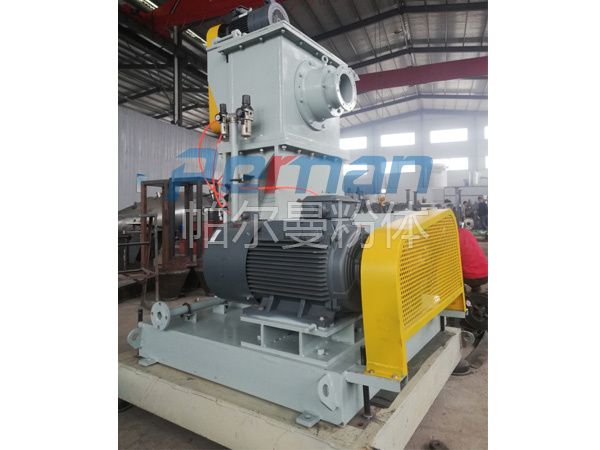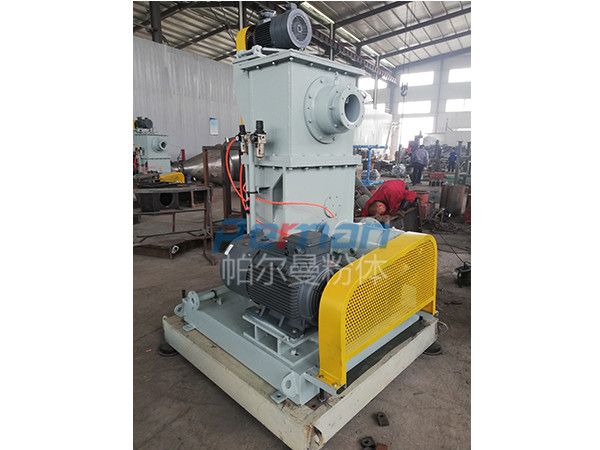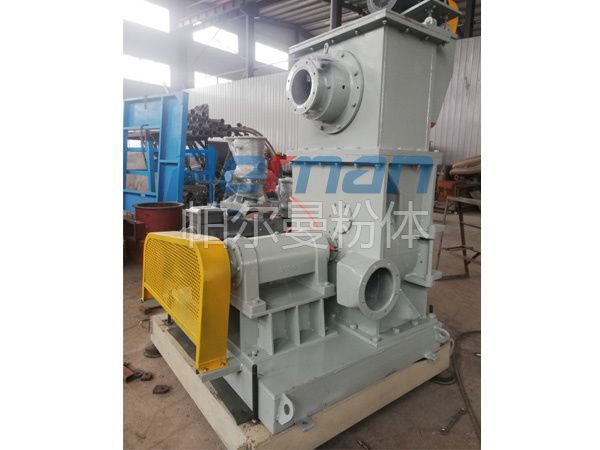On site grinding machine at a coking plant in Qujing, Yunnan
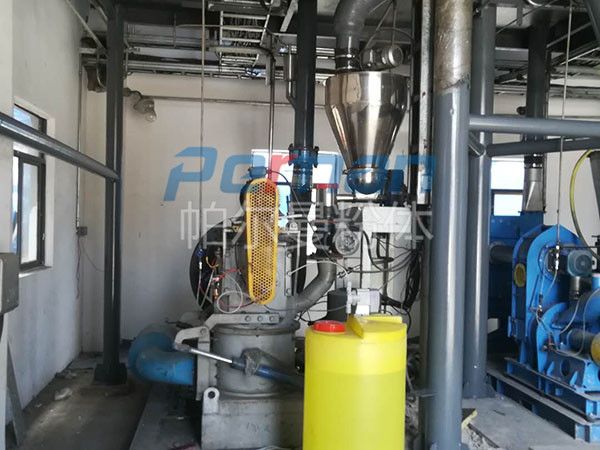
Air classification grinder
——Sodium bicarbonate grinding in flue gas deacidification process
Hazardous waste treatment, steel plant coke oven, thermal power generation, municipal waste, sludge incineration, non-metallic ore burning, ceramic industry, glass manufacturing
With the increasingly strict requirements of environmental regulations, the dry deacidification principle of baking soda developed by Parman in combination with advanced processes in Europe and America has been increasingly applied. Dry adsorption using sodium bicarbonate as adsorbent to remove various pollutants contained in flue gas. Its purification effect can be compared with other known methods, such as spray adsorption with lime milk as adsorbent. Dry flue gas purification can not only be used in coal-fired power plants, hazardous waste treatment, municipal waste or alternative fuel incineration plants, but also widely used in industrial furnaces in industries such as glass, cement, and metallurgy. The use of dry flue gas purification can economically remove gases containing acidic substances, such as SO2, HCI, etc., and meet the national standard for flue gas emissions.
The flue gas contains a large amount of acidic gases. After extensive data and experiments, it has been found that only when sodium bicarbonate (baking soda, NaHCO3) is small enough to react efficiently with the acidic components in the flue gas. It removes acidic pollutants from flue gas through chemical adsorption, and can also remove some inorganic and organic trace substances through physical adsorption. This process directly sprays sodium bicarbonate fine powder into high-temperature flue gas. Sodium bicarbonate decomposes at high temperatures to produce sodium carbonate Na2CO3, H2O, and CO2.
In general, the flue gas temperature is between 140 and 250 ° C. Due to the high activity of sodium bicarbonate adsorbents, a slight excess of sodium bicarbonate (with a stoichiometric factor between 1.1 and 1.3) is usually sufficient.
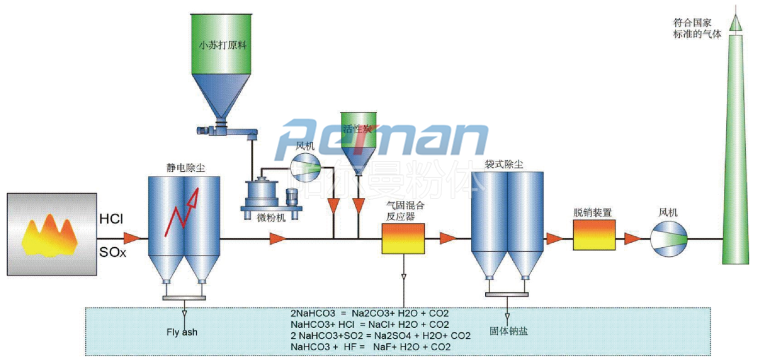
he particle requirements are related to the composition of the flue gas, and the required particle size for the removal of SO2 and HCl may vary. Due to transportation and storage reasons, sodium bicarbonate raw materials are usually coarse particles (with a d50 value of approximately 200 microns). To achieve high reaction activity, the adsorbent must have a large specific surface area. Therefore, before injecting into the flue gas pipeline, sodium bicarbonate must be ground to a certain fineness. For example, to remove SO2, the fineness of sodium bicarbonate must reach d90<20 μ m. And removing HCl only requires d90<35 μ m. If the system operation is correct, more than 95% of SO2 can be removed; The removal rate of HCl can even reach 99%. In order to maintain the required fineness of sodium bicarbonate in long-term operation, an air grinder is usually used for grinding, and the adsorbent is transported by gas transportation and directly introduced into the flue gas pipeline through multiple nozzles to ensure uniform dispersion in the pipeline. This equipment is designed to be simple and durable, and its investment and operating costs are lower compared to other flue gas purification methods.
The sodium bicarbonate grinding process will be the core process of this technology.
CAM-Y baking soda grinder
The problem of equipment fouling in negative pressure air grinding systems is often the focus of discussion. The cleaning of equipment, especially the cleaning of the conveying fan, is too time-consuming. In addition, the deposits on the impeller of the fan during startup and shutdown may also peel off, leading to vibration of the fan and oscillation of its operating state. Therefore, it is possible to consider changing the negative pressure process to a positive pressure process. In the new working mode, the fan is installed before the grading mill, and the process air is compressed into the grinding system. The advantage of this working mode is that the ground sodium bicarbonate is not transported through the fan, completely avoiding the problem of fan fouling. In addition, the power consumption of wind turbines has also been reduced, resulting in lower operating costs. However, it poses a higher test on the sealing performance of the equipment. Strict requirements are placed on the design structure, processing accuracy, and coordination of the equipment, resulting in higher equipment cost.
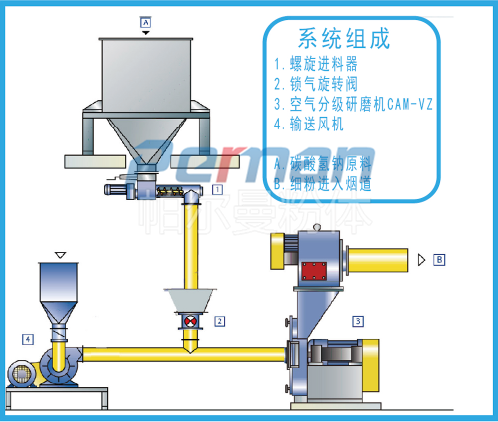
The dry adsorption process has made breakthrough progress in removing gaseous inorganic pollutants. This process has become one of the standard processes for removing hydrogen chloride, hydrogen fluoride, and sulfur oxides, especially suitable for online purification of incineration plant flue gas.
Through the new development of process and equipment technology, the performance of dry flue gas purification process can be completely comparable to that of efficient wet process. The applicability and economy of the dry flue gas purification process using sodium bicarbonate need to be analyzed separately for each individual case.
The Parman CAM series sodium bicarbonate grinding system is flexibly customized, and the simple and durable equipment greatly improves the usability of the process and the reliability of the flue gas purification process.


